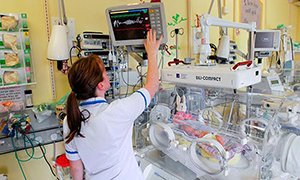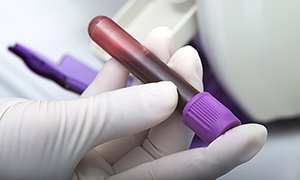Sepsis resource collection
We have brought together a selection of our most popular articles on the topic of sepsis from across our journals to inform your practice.
Sepsis remains a significant cause of death – it is estimated that 44,000 people die from ‘the silent killer’ every year. RCNi has a wide range of resources available to help nurses improve diagnosis and early management of the condition.
Nursing Standard subscribers have access to 10 free articles from our specialist journals every month so we have included peer-reviewed content on identifying and managing sepsis in the community, in older people and in children from Emergency Nurse, Nursing Children and Young People, Nursing Older People and Primary Health Care.
What you can do
Help raise awareness of sepsis by reading the content in this resource collection and sharing it on social media using the weblink rcni.com/sepsis-resources and the hashtag #WorldSepsisDay
Clinical update

/Science Photo Library
Sepsis Six update: the important changes every nurse needs to know about
The screening and management tool the Sepsis Six has been updated. The tool, which sets out the six actions that should be taken within one hour in suspected sepsis cases, now lists as its first step that patients should be seen by a senior clinician.
Read the article Read the news story

Sepsis guidance: what nurses are now required to do
All NHS trusts in England are now contractually obliged to comply in full with the sepsis advice in a bid to improve accountability. It is part of the NHS Long Term Plan, which sets out priorities for the health service in England over the next decade.
Peer-reviewed articles

Screening for sepsis: SIRS or qSOFA? A literature review
This article aims to compare and evaluate the effectiveness of systemic inflammatory response syndrome (SIRS) and quick Sequential Organ Failure Assessment (qSOFA) in detecting sepsis in emergency department patients.

Sepsis: an overview of the signs, symptoms, diagnosis, treatment and pathophysiology
This article unpicks the signs and symptoms of sepsis with guidance for emergency department nurses who are responsible for assessing patients with potential sepsis. It relates monitoring, investigation and treatment expectations to the underlying pathophysiology and refers to the individual and global implications of the condition.
Read the article Test your knowledge

Overview of the incidence, early identification and management of sepsis
Consensus definitions of sepsis are imprecise and the incidence and costs of the condition are thought to be underestimated. This article emphasises the early identification and effective management of sepsis, which remain crucial to improving patient outcomes such as morbidity and mortality.

Recognition and clinical management of sepsis in frail older people
This article provides an overview of the important role played by nurses in acute hospital settings in the early identification and treatment of suspected sepsis in frail older patients, and in escalating the care and management of deteriorating patients.

Lactate in the emergency department: a case-based critical reflection
This article uses a case-based reflection to critically analyse the role of lactate measurement in these patients. It examines the rationale for testing, and the potential causes of raised levels, to remind clinicians that this diagnostic intervention must be taken in the context of patients' clinical presentations and not in isolation.

Importance of measuring lactate levels in children with sepsis
This article discusses the importance of measuring lactate levels in sepsis, the pathophysiology of lactate production, causes of elevated lactate levels, lactate measurement, nursing management of patients with elevated lactate levels, limitations of using lactate as a biomarker for diagnosing sepsis and implications for practice.

Recognition and nursing management of sepsis in early infancy
Serious bacterial and viral infections occurring in early infancy are important factors affecting morbidity and mortality. Recognition of sepsis by healthcare professionals is vital and allows initiation of appropriate early treatment which can be life-saving and improve outcomes for these infants greatly. This article outlines the leading causes of sepsis.
Read the article Test your knowledge

Recognition and nursing management of sepsis in early infancy
Neonatal sepsis describes serious bacterial or viral infections that manifest in the first 28 days of life, causing significant morbidity and mortality. This article discusses neonatal sepsis, including causative organisms, types of neonatal sepsis and why neonates are vulnerable to infection
Improving management of sepsis in the community

This article aims to inform nurses practising in the community about the General Practice Sepsis Decision Support Tool. The UK Sepsis Trust developed this tool to enable recognition and early treatment of patients with sepsis in the community setting, and to ensure a safe transfer to emergency departments and admission to a critical care unit.
Interactive read

From death’s door to saving lives: The sepsis patient who became a nurse
Three years ago, Katie Dutton was close to death from sepsis. Not only did she survive, but her experience drove her to make a difference.
She completed an access to nursing course from her hospital bed and, in the first year of her nursing degree, designed and delivered successful sepsis training days for her peers.
Features

Sepsis: how one ED has achieved a 70% rise in patients receiving life-saving treatment within the hour
Cambridge University Hospitals (CUH) NHS Foundation Trust has been lauded by NHS England for its use of an electronic alert system to identify, and provide faster access to treatment for, patients with sepsis.

Sepsis care – getting it right every time
Sepsis is a time critical condition, which can be life threatening. World Sepsis Day on 13 September, provides us with an opportunity to consider the impact of sepsis throughout the world.

Simple visual tool helps safeguard mothers after caesarean section
A simple tool developed by a Queen’s Nurse to help health visitors enhance awareness of post-partum sepsis won the Community and General Practice Nursing category of the 2019 RCNi Nurse Awards.

Emergency nurse wins award for work identifying children with sepsis
Drew McDonald was named the winner of the child health category of the 2017 RCNi Nurse Awards for his development of a clear and easy-to-use sepsis recognition tool for nursing staff to refer to during triage to identify sepsis in children.
Comment

What emergency nurses should do when assessing sepsis risk in people with learning disabilities
Everyone with an infection is at risk of developing sepsis, so it is important that people with a learning disability, and those who care for them, know what sepsis is, how to recognise the early signs and understand the importance of seeking urgent medical attention.

Sepsis: why a nationally agreed early warning system for children is urgently needed
Children's nurse Gillian Priday urged RCN congress to lobby for mandatory training to combat sepsis amid calls for a paediatric early warning system to be adopted in England.

What we need to do to reduce the number of sepsis cases in the UK
Gillian Priday wants to see compulsory training in sepsis for all children’s nurses and other healthcare professionals wherever they work
Podcast

Picture: Neil O’Connor
Sepsis focus
This episode of the Nursing Standard podcast features the moving story of Sam Morrish, a three-year-old boy who died of sepsis after warning signs were missed. His mother, Sue, talks of the pain, confusion and errors of communication during his final 24 hours.
University of Northampton associate professor Sarah Neill discusses ways to promote sepsis awareness and reduce the tendency of parents to think their concerns will be dismissed.
RCNi Decision Support topics
RCNi Decision Support tools are interactive online and mobile resources that support registered nurses and healthcare professionals with evidence-based clinical information at the time and location of decision making.

Sepsis in adults
This topic will support you to recognise and make effective decisions about the initial treatment of sepsis in adults by providing evidence-based information to promote best practice. It should only be used alongside clinical judgement, local policies and procedures, and your regulatory code.

Neutropenic sepsis in adults
This topic will support you to recognise and make decisions about the initial treatment of neutropenic sepsis in an adult by providing evidence-based information to promote best practice. It should only be used alongside clinical judgement, local policies and procedures, and your regulatory code.
Further information
